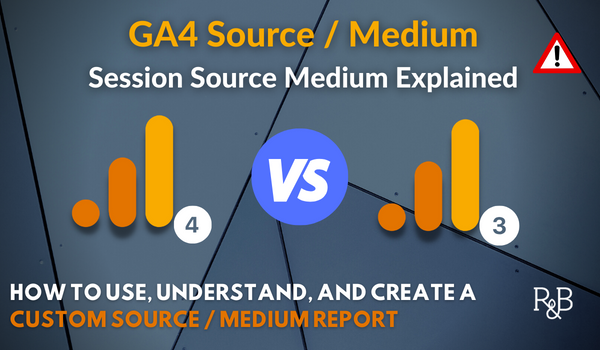Comprehending Secondary Dimensions in Google Analytics: Definition and Strategic Integration
Leveraging Additional Dimension in Google Analytics to Strengthen Recognizing of Customer Actions and Involvement
Utilizing Google Analytics' second dimensions supplies a nuanced technique to understanding customer habits and involvement past surface-level metrics. This deeper dive into individual behavior not only improves advertising techniques however likewise holds the key to optimizing internet site efficiency and enhancing overall user experience.
Understanding Customer Habits With Second Dimensions
By layering additional dimensions onto main dimensions such as traffic sources or touchdown web pages, marketing experts can reveal beneficial understandings into user behavior patterns. By assessing bounce prices in combination with additional measurements like gadget classification or location, businesses can recognize details sectors of individuals who may be experiencing issues with website use or material significance.
Additionally, secondary measurements can aid marketers identify relationships in between different data factors, causing the discovery of hidden patterns or fads in individual habits (what is a secondary dimension in google analytics). By segmenting data making use of additional dimensions such as demographics or behavior, organizations can customize their advertising strategies to much better satisfy the needs and choices of particular user teams. Generally, leveraging secondary dimensions in Google Analytics enhances the deepness of evaluation and makes it possible for more informed decision-making based on an extensive understanding of user actions
Assessing Interaction Metrics Effectively
Structure on the understandings got from utilizing additional measurements in Google Analytics to understand individual actions patterns, effectively examining engagement metrics is important for optimizing advertising approaches and enhancing individual experience. Interaction metrics provide important details on just how users communicate with a web site or application, indicating the level of rate of interest and participation they have with the web content. By diving right into metrics such as bounce rate, average session duration, pages per session, and conversion prices, marketers can evaluate the efficiency of their electronic campaigns and make data-driven choices to drive involvement. Recognizing which features or pages attract and retain users, in addition to determining prospective points of rubbing in the individual journey, allows businesses to tailor their strategies for boosted involvement and conversion. Moreover, analyzing involvement metrics over time allows for the monitoring of fads and the evaluation of the influence of optimizations or adjustments made to the electronic residential or commercial properties. Fundamentally, a deep dive into engagement metrics empowers marketers to refine their strategy, improve user contentment, and eventually drive service growth.

Uncovering Insights for Marketing Strategies
By diving into Google Analytics information via additional measurements, marketers can draw out beneficial information that can substantially influence their advertising methods. By analyzing which channels are bringing in the most involved customers or yielding the greatest conversion prices, marketers can designate their sources much more properly to take full advantage of ROI.
In addition, uncovering insights on individual actions patterns, such as one of the most popular touchdown pages or the common individual flow with the internet site, can provide beneficial assistance for maximizing website content and individual experience. Recognizing exactly how individuals engage with the internet site can help marketing experts tailor their messaging and calls-to-action much more efficiently, eventually leading to improved interaction and conversion rates. Basically, leveraging secondary dimensions in Google Analytics can provide a riches of actionable insights that can drive more effective and educated advertising methods.
Enhancing Site Performance Through Data
Enhancing web site efficiency with data-driven optimization methods is an essential great site part of keeping an affordable on-line visibility and conference customer assumptions. By leveraging information from tools like Google Analytics, website proprietors can recognize locations of renovation to improve customer experience and drive much better outcomes. One essential facet of enhancing website performance is assessing web page load times. Slow-loading web pages can bring about high bounce prices and unfavorable user experiences. Information understandings can identify the particular elements creating hold-ups, enabling targeted optimizations to quicken lots times.
Additionally, information can reveal which web content resonates most with customers, informing material strategy choices to increase involvement. Recognizing user actions patterns, such as navigating paths and communications, can assist the optimization of website format and conversion funnels. Data-driven A/B screening can assist determine one of the most effective style and material variants to optimize conversions.
Enhancing Customer Communications and Outcomes
"/>
Via the analysis of secondary dimensions such as demographics, habits circulation, or website traffic sources, web site proprietors can gain a thorough understanding of their audience. what is a secondary dimension in google analytics. This understanding permits the application of personalized strategies to deal with various user sections, leading to increased engagement and conversion rates

Conclusion
Finally, leveraging second measurements in Google Analytics provides a deeper understanding of individual actions and involvement. By assessing information properly, uncovering insights, optimizing site efficiency, and improving individual communications, services can make educated choices to enhance their advertising methods and general results. Utilizing this tool permits an extensive view of user tasks, bring about extra targeted and effective electronic advertising and marketing projects.
Structure on the understandings obtained from making use of additional dimensions in Google Analytics to understand user actions patterns, properly assessing engagement metrics is crucial for optimizing advertising and marketing approaches and improving individual experience.Furthermore, uncovering understandings on individual behavior patterns, such as the most preferred touchdown pages or the typical customer flow through the website, can give useful assistance for optimizing internet site material go to this site and user experience. By focusing on boosting individual interactions, internet site proprietors can substantially improve involvement, conversion rates, and total user complete satisfaction. These dimensions give much deeper insights right into user actions, choices, and activities on the web site, enabling a more targeted technique to maximizing individual experience.
By optimizing these touchpoints, website owners can streamline the customer experience, resulting in enhanced outcomes and higher levels of customer fulfillment.